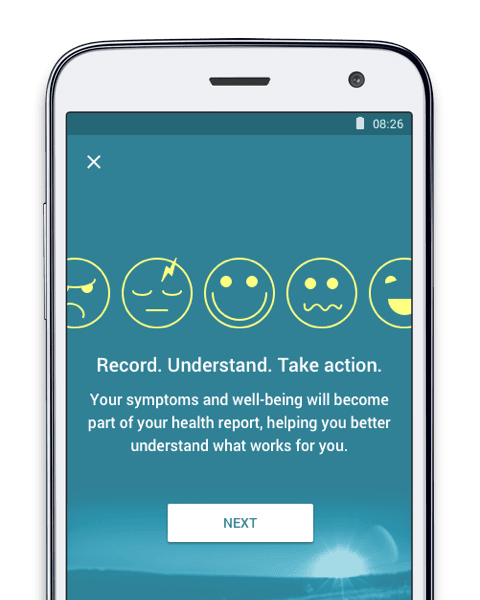“I want to end it all.” If you came across a social media post indicating thoughts of suicide or self-harm, posted by a person you don’t know yourself, would you know how to respond? While many of our interactions on social media are with friends and loved ones, much of the content on these sites is in the public domain, meaning we often come across posts from those we have never met or have had little contact with. But that does not mean we cannot help those in need of support.
In this article we discuss how to respond to such posts made by people you do not know personally. If you come across a suicidal post from a friend or loved one, we have another article here:
Social Media & Suicide: Spot the Signs and Support a Loved One in Need
Reacting to Social Media Posts Can Save Lives
Daniel Reidenberg, executive director of Suicide Awareness Voices of Education (SAVE), saw a post on Facebook, in which a young lady – newly widowed – announced her intention to take her own life and that of her child.
He did not know the woman and did not know her location.
He contacted Facebook’s safety centre in Montréal. The staff, within two to five minutes, were able to trace the post to an Internet café in a small South American village. They contacted the local authorities.
The police, with the woman’s Facebook picture in hand, were able to find her within ten minutes of her leaving the café.
She was taken to the hospital and the child into care.
The story, which can be found in more detail here, goes to show how you can respond to social media posts pertaining to suicide, even if you do not know the person in question.
In this case, Reidenberg may have saved not only the life of a young woman, but that of a child as well.
Should You Act?
With the lack of aids such as tone of voice and body language in a lot of online content, it can be a challenge to differentiate posts from an individual contemplating suicide from those simply letting off steam or having a bad day.
Signs you may notice in somebody you know well will not be so apparent in posts from unknown individuals.
One of the traditional warning signs is to be aware of direct of indirect expressions, such as: “ I don’t want to live anymore”, “there is nothing to live for anymore”, or “people will be better off without me.”
This is equally true of online content, and should not be ignored.
Whether you know the person posting such content or not, it should always be taken seriously and be acted upon.
How to Respond to Suicidal Social Media Posts
It can be difficult to know how to respond to posts indicating a person is contemplating suicide when you do not know the person.
However, that does not mean you should ignore the post.
Use the Reporting Systems
Reporting a post is a simple step, but one that can be highly effective – as the above story proves.
All of the major social media platforms have a reporting system should you come across posts suggesting a person is contemplating suicide.
When you do so, the post will be sent to professionals who can review the post. Should further action be required, the information they have access to (such as location) makes them well-equipped to handle the situation.
Here are links to the reporting pages of some of the most popular platforms:
For other social media sites, a quick search for ‘reporting suicidal posts on [social media platform]’ will almost certainly direct you to the relevant page.
Reaching Out Directly or to Someone Closer
Contacting a person with a private message is not necessarily off-limits, even if you do not know the person in question.
If you judge it to be an appropriate move and feel comfortable doing so, reaching out directly can prove beneficial.
If you choose to do so, however, ensure you are truly willing to open such a dialogue. An insincere or half-hearted approach could do more harm than good.
The National Suicide Prevention Helpline offers some tips on how to do discuss the topic of suicide:
- Be direct. Talk openly and matter-of-factly about suicide
- Be willing to listen. Allow expressions of feelings. Accept the feelings
- Be non-judgmental. Don’t debate whether suicide is right or wrong, or whether feelings are good or bad. Don’t lecture on the value of life
- Get involved. Become available. Show interest and support
Help a Friend in Need, created by Facebook and the Jed Foundation offers similar advice.
Bear in mind that these guides are designed for speaking to people you know. If the post you are concerned about was published by a stranger or someone you have had little contact with, finding the suitable tone for that individual may be more challenging.
Reaching out personally, either directly to the person in question or to a close friend or family member, can be an effective tool in helping someone requiring support.
However, make sure you are comfortable doing so and are sincere in your willingness to discuss the topic.
If you are not comfortable reaching out personally, simply reporting the post is the preferable course of action.
If you see a social media post pertaining to suicide, the fact you may not know that person, have ever had any contact with them, and may even live on the other side of the world, does not mean you cannot help.
Even if you do not contact that person directly, the major social media channels are well-equipped to respond to such situations.
Spending a couple of minutes to file a report can help them do so.
As Daniel Reidenberg’s story proves, it is a simple act that can save lives.
Take a look at some of the other posts on the MyTherapy blog:



